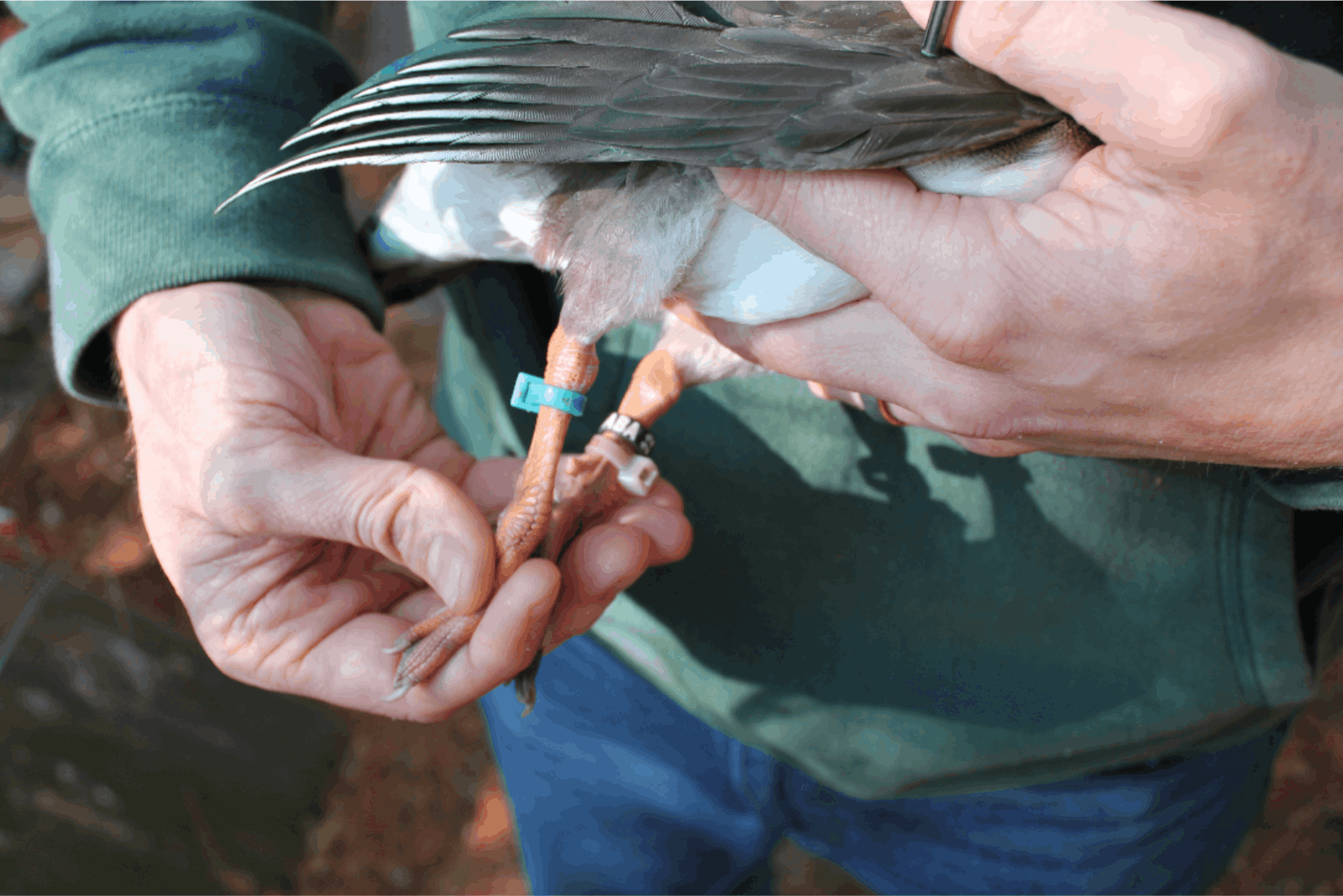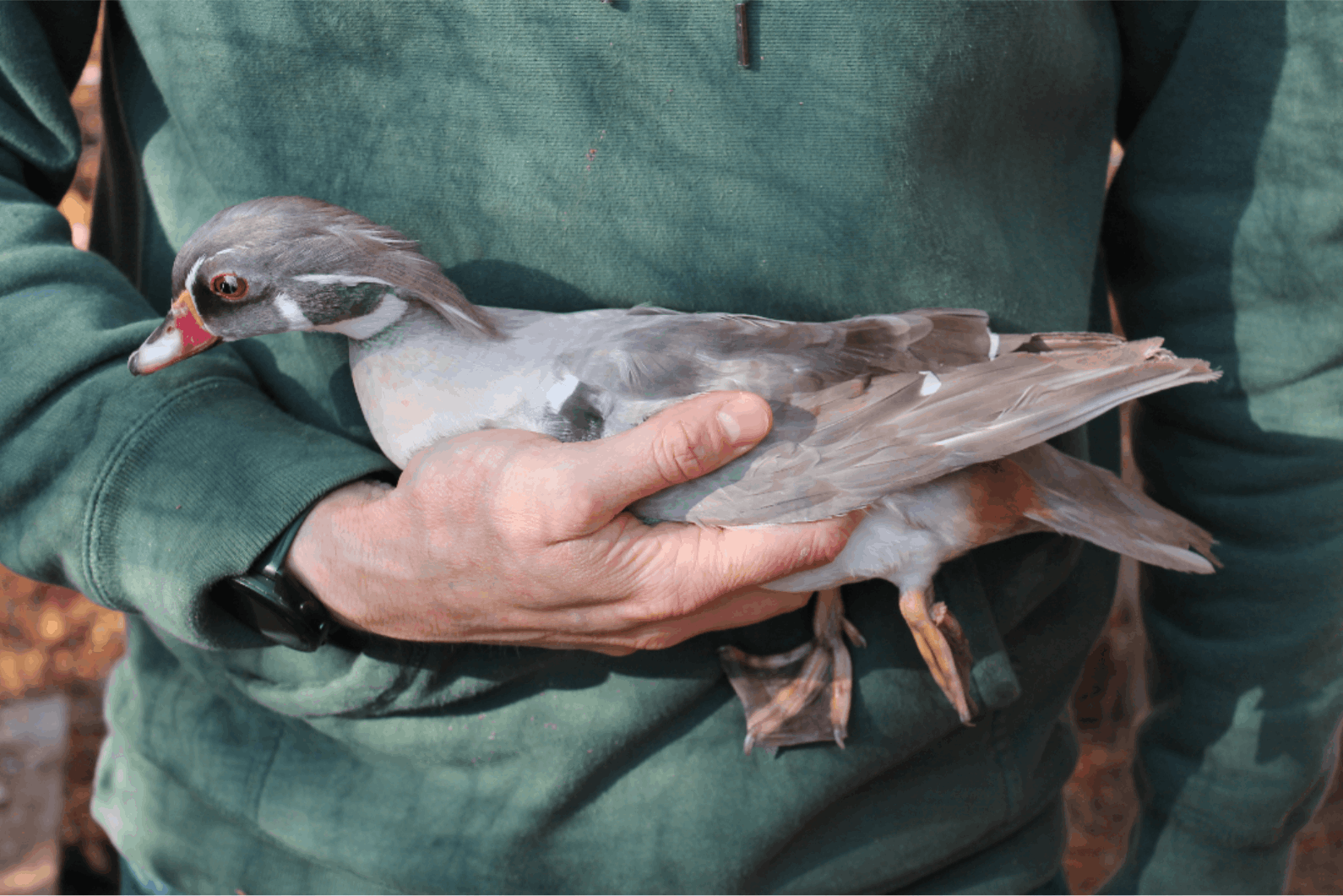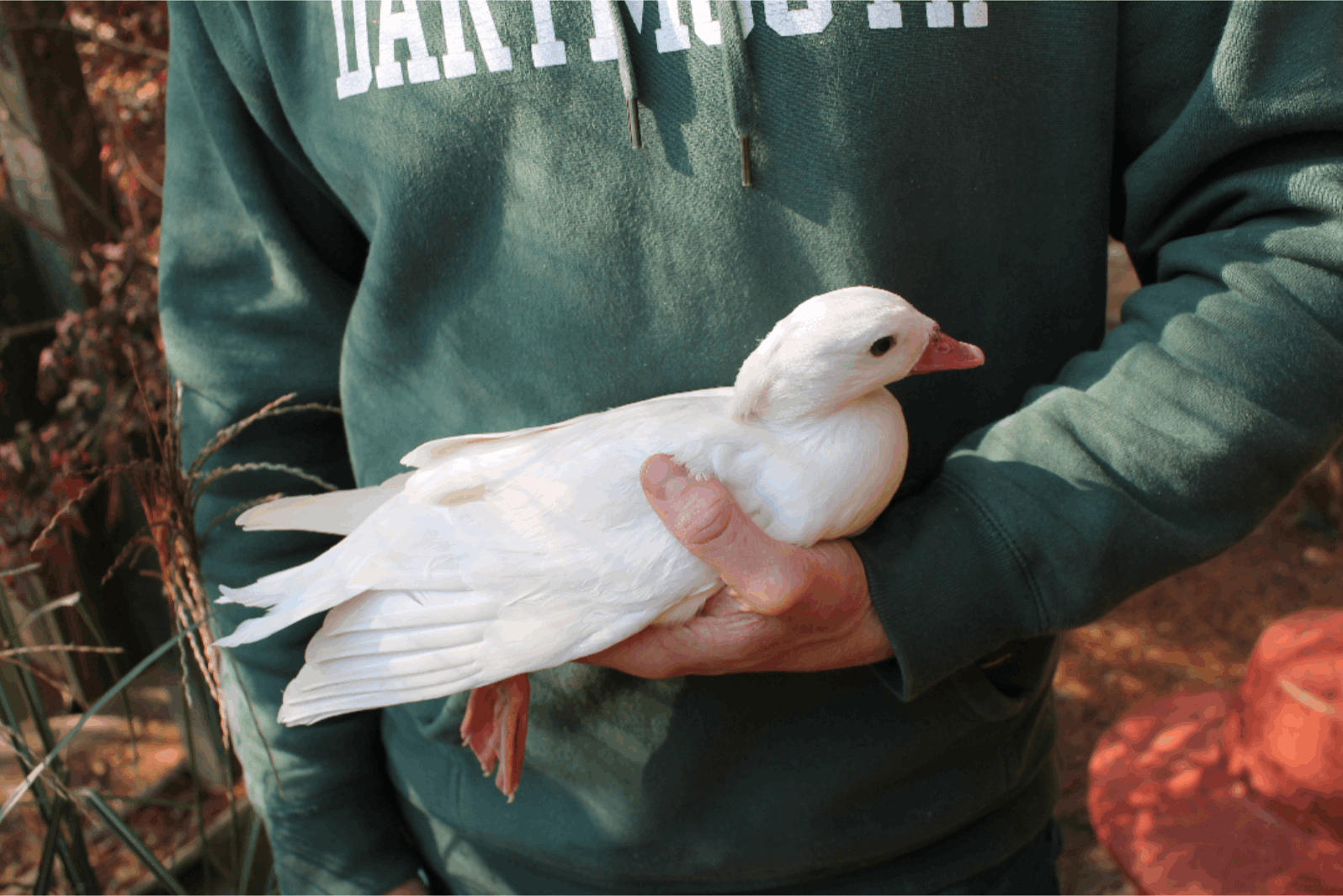
by Richard Barczewski
I have been thinking about this topic for a while and decided to put my thoughts down on paper as there are a lot of opinions on this topic and I know not everyone will agree on it. There has always been an interest among some bird keepers to breed for the unusual. Over the years, various mutations have occurred, often as a result of inbreeding (breeding closely related individuals). When a bird keeper is able to produce a mutation (White, Apricot, Silver, Platinum Wood duck; Blonde Ring Teal; Silver Redhead; White, Apricot Mandarins; etc) they often work to produce multiples of that mutation and put them on the market, usually at a price, quite a bit higher than you would expect to pay for a normal colored bird of the same species. For those in the know, I realize that I left off a lot of mutations that currently exist in the hobby. These mutations exist in just about every group of birds, and are not limited to the ducks. They also occur in pheasants, quail, peafowl, partridge, doves and the like.
Creating a mutation occurs when you concentrate genes in a particular species. Gene concentration occurs through inbreeding or the breeding of closely related individuals like a brother and a sister, father and a daughter, mother and a son. Repeatedly breeding in this fashion will allow for a mutation (which I might add, is already in the gene pool) to show itself in the phenotype. Inbreeding will also concentrate other genes, be they good genes that enhance the species or bad genes that can be detrimental to the species. There are some folks who feel that as a rule, mutations are not as hardy as the non-mutated varieties of a species and this is probably true in many cases.
I should also mention that for a mutation to be produced, the gene for that mutation must be present in the parent stock. If your parent stock birds do not possess the gene for the mutation, it will not occur when breeding those birds together.
You can look at any individual from a phenotype perspective (what you can see), or a genotype perspective (what you have genetically but often cannot see). For a genetic mutation to occur, in the case of a normal recessive gene, both parents of that bird would have to have the gene, and in the case where (again with a normal recessive gene), this occurs, one individual out of every four individuals resulting from that mating will exhibit the mutation.
Now, like I mentioned before, the mutations are already present in the population, however in the wild, if a mutation would occur, such as a white wood duck, that bird would have very little chance at survival. In a natural population, an abnormally colored bird would stand out, making it prone to predation, which in turn would take it out of the gene pool before it was able to reproduce. Over time, since these birds generally do not reproduce, the number of birds in the population that would have the mutation is very low.
One of the reasons we are able to produce mutations in captive bred populations is that we greatly reduce predation from the equation and the mutations that occur are allowed, or even encouraged to survive and reproduce, resulting in a greater number of birds that actually carry the gene for that mutation.
If you think about it another way, in the wild, any bird that would have the gene for the mutation would be unlikely to come in contact with another bird with that same mutation, mate and produce young that have the mutation, because of the rarity of the gene in the population. If however, that bird would mate with a bird that does not carry the mutation, only about one in four of the resulting offspring would have the gene and none of the offspring would physically show the color mutation.
In our captive breeding programs, if you have a bird that happens to have the gene for a mutation, it is much more likely to show itself within that population. Remember that most mutations start out very rare, even in captive populations and then it is the breeders who proliferate that gene because they select for it.
Another thing to think about is how genetic material is passed from one generation to another. Sometimes, a specific gene is located on the sex chromosome of a bird. If the gene in question (that causes a mutation) is on a sex chromosome, you could end up with that gene being sex-linked. What does that mean? Well, a sex-linked trait in birds is one that is carried by the male, however in the first generation, it will only show itself in the females of his offspring and only half of the female offspring will exhibit that mutation. An example is white mandarins. A male Mandarin (normal colored but possessing the gene for white) is mated with a female Mandarin (who if normal colored cannot have the white gene on her chromosome), the resulting offspring would be 25 percent males of normal color (not carrying the white gene), 25 percent males of normal color (carrying the white gene and known as splits), 25 percent female (normal colored not carrying the white gene) and 25 percent females that are white.
One key to remember with genetics is that it works like flipping a coin. While there is a 25 percent chance that you can end up with any of the above scenarios it is all by chance so the actual turnout in a clutch of ducklings may vary off the 25 percent rule, however over the course of thousands of clutches, it works out to a 1 in 4 ratio.
The other case would be a mutation that is not sex-linked when the gene causing the mutation is on a chromosome other than the sex chromosome. In those cases, the gene can be carried by either sex so you can have carrier birds (known as splits) of either sex that have the gene and can pass it on to their offspring. In those cases, the mutation occurs when both the mother and the father have the gene and pass it on to their offspring. If both parents do not have the gene for the mutation, your offspring will be normally colored and not have the gene for the mutation. If one parent has the gene and the other does not have the gene for the mutation, none of the offspring will have the mutation and one in four offspring will carry the gene (split) but not show the mutation.
In either case of sex-linked or normal mutations, one thing is true. If you breed a pair of birds that exhibit or show the mutation such as two silver wood ducks, all the offsprings from a mating of those two mutated birds will be silver mutations.
From an aviculture standpoint one of the biggest problems with mutations are carrier (split) birds. The reason this is a problem, is that some folks do not want to breed mutations, and some folks who breed mutations, do not breed them in a way that allows them to identify what they are selling. What do I mean by this statement?
If you breed mutations, you can do so by breeding either birds with the mutations or carrier (split) birds that are normal in their appearance (phenotype). Some breeding scenarios will produce both normal and carrier birds, however it is impossible to tell the birds who carry the gene from those that do not by their phenotype alone (how they look). As an end result, many of these birds are marketed as normal, even though they carry the gene for the mutation. This is how an individual who may not be interested in mutations will have mutations introduced into their flock! This problem is made much worse if a breeder keeps several mutations within a species in the same pen. Through random mating, populations can have multiple mutations in their genetic make-up and without very careful, planned breeding, you will not be able to determine exactly what you have (genetically) present in your gene pool.
One way to avoid this is to make sure all breeding is done by pairing one bird that shows the mutation with a carrier bird. That mating will only produce either the mutation or carrier birds. In the case of the sex-linked mutations, by pairing a male mandarin with the white gene (split) with a white mandarin female. Any normal colored males produced from that mating will be carrier (split) birds and any normal colored females from that mating will be normal (since the female with the gene is always white). You will also produce some white females and white males from that breeding. Then by keeping those birds in a separate pen during the breeding season, the ducklings resulting from that pairing can be marked to identify them as to their genetic make-up. Personally, I toe clip my carrier birds at hatching and then place a specific colored zip tie on their leg once they get a bit older, for easier identification.
The other way to insure you know the genetic makeup, is to only breed mutations that are actual mutations, however the caution here is that these birds should not be kept in the same enclosure as other pairs of the same species who are not mutations to avoid potential crosses.
Again, mutations have a lot of bird keepers excited about the hobby and they are a growing part of our hobby, however, as their popularity grows, it is going to be harder and harder to keep the mutant genes out of the general population.
Now, that brings us to hybridization. Unlike mutations, hybrids are actual crosses between species. Certain species of birds are known to readily breed with other species. Perhaps to two worst culprits in the ducks are mallards and wood ducks, but there are others. More closely related species are likely to cross than some other species however, crosses between two species may or may not be fertile. In my own personal opinion, I consider hybrids JUNK! But I realize that there are some individuals out there that find them attractive.
From a bird keepers’ perspective, one way to avoid hybridization is to carefully pair up your birds, allowing them to pair bond prior to the breeding season and then do everything in your power to avoid placing species that you know are likely to cross, in the same enclosure during breeding season. Personally, I have seen the following hybrids. Wood Duck x Cinnamon Teal, Wood Duck x Garganey Teal, Wood Duck x Redhead, Green winged Teal X Blue winged Teal. I do not raise mallards, however, I have been told that they will cross just about anything they can breed. Another common hybrid that occurs is Cinnamon Teal X N.A. Shoveler, or Garganey Teal, or Blue winged teal. Even in the case where you have a good pair bond established, once a hen goes to nest, it is possible that the drake will mate up with another species that happens to be in their enclosure. Since colony breeding pens are fairly common in the hobby, hybrids are always something to watch out for.
While it is possible for a hybrid to exist in nature, they usually do not occur unless the breeding ranges of the various species overlap. We see hybridization much more commonly with captive bred birds that are placed together in colony breeding pens where the different species are raised together. That is why some larger breeders of ducks use smaller pens and place only one species in the pen during breeding.
Hybridization can also occur in pheasants where with some species, it is becoming more and more difficult to find birds that are pure. For some reason, there is a major problem with crossing Golden Pheasants with Lady Amherst Pheasants. Many crosses of these two species occurs due to intentional cross breeding on the part of the hobbyist. In this case, the problem is that the resulting hybrid, over time may be more and more difficult for an untrained eye to identify. Again, if these birds get into the general population, it will essentially impact many of the birds available. This gets to be an even bigger problem when hybridized birds find their way into populations of some of the rarer and potentially threatened species.
Many serious breeders have very strong negative feelings towards any hybrids within the species that they raise. Many will remove those birds from the population so that the hybrids will not further taint the gene pool, however not everyone is willing to do this and again, that is part of the problem.
So, what should you do? My personal recommendation is that you should never intentionally cross any species and if you find that an unwanted hybridization occurs, and you are in a financial position to need to recoup some of your losses, euthanize the birds in question and sell them to a taxidermist. Do not sell them into the hobby as they will only end up being bred, furthering the problem. In the case of mutations, it is obvious to me that they are here to stay, however, try to responsibly breed and identify them so that folks who purchase any split individuals know what they are getting. This is especially important when selling birds to individuals who are wanting to keep the pure, natural colored lines in their collections. When you purchase birds, ask the breeder about the genetics behind the birds you are buying. If you do not want mutations, be sure to ask the breeder if they keep mutations and how they can assure you that the birds you are considering do not carry the genes you are trying to avoid. If they are breeding the birds responsibly, they will able to answer the questions you ask.
I hope you have found this discussion useful and as always, should you want to discuss it further, feel free to contact me.



AI Website Generator